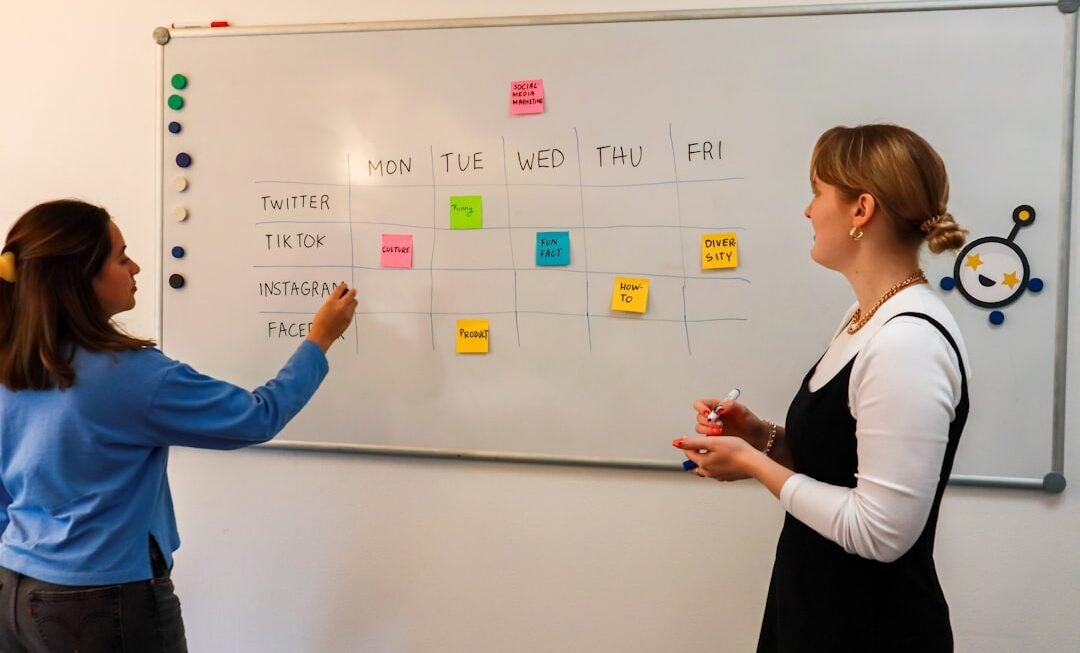In recent years, the landscape of online education has undergone a significant transformation, largely driven by advancements in technology. Virtual reality (VR) and artificial intelligence (AI) have emerged as pivotal forces reshaping how educational content is delivered and experienced. The COVID-19 pandemic accelerated this trend, as educational institutions were compelled to pivot to online learning environments.
As a result, educators and learners alike began to explore innovative ways to enhance the learning experience, leading to a surge in the adoption of VR and AI technologies. The integration of VR and AI into online education is not merely a trend; it represents a fundamental shift in pedagogical approaches. Virtual reality offers immersive experiences that can transport students to different environments, allowing them to engage with content in ways that traditional methods cannot replicate.
Meanwhile, AI provides personalized learning pathways, adapting to individual student needs and preferences. Together, these technologies create a dynamic educational ecosystem that fosters deeper understanding and retention of knowledge.
Key Takeaways
- Virtual reality and AI are revolutionizing online education by providing immersive and personalized learning experiences.
- Understanding the technology behind virtual reality and AI is crucial for educators and students to fully utilize their potential in online education.
- Immersive learning experiences through virtual reality and AI can lead to improved retention, engagement, and understanding of complex concepts.
- Virtual reality and AI enhance student engagement by providing interactive and hands-on learning experiences that cater to different learning styles.
- The role of virtual reality and AI in personalized learning is to adapt to individual student needs and provide tailored educational experiences.
Understanding Virtual Reality and AI Technology
Enhancing Education with Virtual Reality
In the context of education, VR can simulate historical events, scientific phenomena, or even complex mathematical concepts, allowing students to visualize and manipulate information in a tangible way.
Artificial Intelligence: Simulating Human Intelligence
Artificial intelligence, on the other hand, refers to the simulation of human intelligence processes by machines, particularly computer systems. This encompasses a range of capabilities, including learning from data (machine learning), understanding natural language (natural language processing), and making decisions based on input (decision-making algorithms).
Unlocking the Power of VR and AI in Education
In educational settings, AI can analyze student performance data to identify strengths and weaknesses, recommend resources tailored to individual learning styles, and even provide real-time feedback on assignments. The synergy between VR and AI creates a powerful toolset for educators aiming to enhance the learning experience.
The Benefits of Immersive Learning Experiences
Immersive learning experiences facilitated by VR have been shown to significantly enhance student engagement and retention. When students are placed in an interactive environment where they can explore concepts firsthand, they are more likely to develop a deeper understanding of the material. For instance, medical students can practice surgical techniques in a virtual operating room without the risks associated with real-life procedures.
Similarly, history students can walk through ancient civilizations or witness pivotal moments in time, fostering a connection to the subject matter that traditional textbooks cannot achieve. Moreover, immersive experiences cater to various learning styles. Visual learners benefit from the vivid imagery of VR environments, while kinesthetic learners engage through hands-on interaction.
This multi-sensory approach not only makes learning more enjoyable but also accommodates diverse student needs. Research has indicated that students who participate in immersive learning experiences often outperform their peers in traditional settings, demonstrating the effectiveness of VR as an educational tool.
How Virtual Reality and AI Enhance Student Engagement
Student engagement is a critical factor in successful learning outcomes, and both VR and AI play significant roles in fostering this engagement. Virtual reality captivates students by providing them with experiences that are not only educational but also entertaining. The novelty of VR technology captures attention and encourages active participation.
For example, language learners can immerse themselves in virtual environments where they must communicate with native speakers or navigate real-world scenarios that require language skills. This level of engagement is difficult to achieve through conventional online courses. AI enhances engagement by personalizing the learning experience.
Intelligent tutoring systems can analyze student interactions and adapt content delivery accordingly. For instance, if a student struggles with a particular concept in mathematics, the AI can provide additional resources or exercises tailored to that specific area of difficulty. This responsiveness keeps students motivated and invested in their learning journey, as they receive support that aligns with their individual progress.
The Role of Virtual Reality and AI in Personalized Learning
Personalized learning has gained traction as an effective educational approach that recognizes the unique needs of each student. VR and AI are instrumental in facilitating this customization. With VR, learners can progress at their own pace within immersive environments that adjust to their skill levels.
For example, a student studying biology might explore a virtual ecosystem at a basic level before advancing to more complex interactions as their understanding deepens. AI complements this by continuously assessing student performance and preferences. By analyzing data from quizzes, assignments, and interactions within the learning platform, AI can recommend specific modules or activities that align with each student’s learning trajectory.
This tailored approach not only enhances comprehension but also fosters a sense of ownership over one’s education, empowering students to take charge of their learning paths.
Overcoming Challenges in Implementing Virtual Reality and AI in Education
Financial Barriers to Access
One significant obstacle is the high cost associated with acquiring VR hardware and developing high-quality educational content. Many educational institutions may not have the necessary financial resources to invest in these technologies, leading to disparities in access among students.
Teacher Training and Inclusivity
Another challenge is the need for training educators on how to effectively integrate VR and AI tools into their teaching practices. Moreover, it is essential to ensure that these technologies are user-friendly and accessible to all students, including those with disabilities. Developers must prioritize inclusivity when designing educational content to ensure that all learners can benefit from these innovations.
Data Privacy and Security Concerns
Furthermore, the use of AI systems that collect and analyze student information raises concerns about data privacy and security. Educational institutions must establish robust policies to protect sensitive data while leveraging AI’s capabilities.
Virtual Reality and AI in Skill-based Training and Simulation
The application of VR and AI extends beyond traditional academic subjects; it is particularly valuable in skill-based training and simulation scenarios. Industries such as healthcare, aviation, and manufacturing have begun to adopt these technologies for training purposes. For instance, flight simulators utilize VR to provide aspiring pilots with realistic flying experiences without the risks associated with actual flight training.
Trainees can practice emergency procedures or navigate challenging weather conditions in a controlled environment. In healthcare education, VR simulations allow medical professionals to practice procedures on virtual patients before working with real ones. This hands-on experience is invaluable for building confidence and competence in high-stakes situations.
AI further enhances these simulations by providing real-time feedback on performance, helping trainees identify areas for improvement. As industries continue to evolve, the demand for skilled professionals will only increase, making VR and AI essential tools for effective training programs.
The Future of Virtual Reality and AI in Online Education
Looking ahead, the future of virtual reality and artificial intelligence in online education appears promising yet complex. As technology continues to advance at an unprecedented pace, we can expect more sophisticated VR experiences that blur the lines between reality and simulation. Innovations such as haptic feedback devices may allow users to feel sensations within virtual environments, further enhancing immersion.
AI will likely play an increasingly central role in shaping personalized learning experiences. As algorithms become more refined, they will be able to predict student needs with greater accuracy and provide tailored resources instantaneously. Additionally, the integration of VR and AI could lead to hybrid learning models that combine online education with real-world experiences, creating a seamless transition between virtual and physical classrooms.
Ethical Considerations in Virtual Reality and AI Education
As with any technological advancement, ethical considerations must be at the forefront of discussions surrounding VR and AI in education. One major concern is data privacy; educational institutions must ensure that student information collected by AI systems is protected from misuse or unauthorized access. Transparency regarding how data is used is essential for building trust among students and parents.
Moreover, there are ethical implications related to equity and access. As VR technology becomes more prevalent, it is crucial to address disparities in access among different socioeconomic groups. Ensuring that all students have equal opportunities to benefit from these innovations is vital for promoting inclusivity within education.
Additionally, educators must be mindful of potential biases embedded within AI algorithms that could inadvertently disadvantage certain groups of students.
The Impact of Virtual Reality and AI on Traditional Education Systems
The integration of virtual reality and artificial intelligence into online education has profound implications for traditional education systems. As these technologies gain traction, they challenge conventional teaching methods that rely heavily on lectures and rote memorization. Educators may need to rethink their approaches to curriculum design and assessment as immersive experiences become more commonplace.
Furthermore, the rise of VR and AI could lead to a shift in the role of educators themselves. Rather than being the sole source of knowledge dissemination, teachers may transition into facilitators who guide students through personalized learning journeys within virtual environments. This evolution necessitates ongoing professional development for educators to equip them with the skills needed to navigate this new landscape effectively.
Tips for Integrating Virtual Reality and AI into Online Education Platforms
To successfully integrate virtual reality and artificial intelligence into online education platforms, several strategies can be employed. First, institutions should conduct thorough research on available technologies and select those that align with their educational goals and budget constraints. Collaborating with technology providers can also facilitate access to high-quality content and resources.
Second, professional development programs for educators are essential for ensuring effective implementation. Training sessions should focus on how to leverage VR and AI tools within existing curricula while addressing potential challenges related to accessibility and inclusivity. Finally, fostering a culture of innovation within educational institutions encourages experimentation with new technologies.
Encouraging educators to share best practices and success stories can inspire others to embrace VR and AI as valuable components of their teaching toolkit. By thoughtfully integrating virtual reality and artificial intelligence into online education platforms, institutions can create engaging, personalized learning experiences that prepare students for success in an increasingly digital world.












